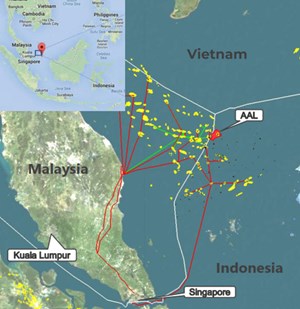Asian offshore oil field development gets green light with first production anticipated in 2026
(WO) – Special Task Force for Upstream Oil and Gas Business Activities (SKK Migas), in collaboration with Production Sharing Contract (PSC) Prima Energy Northwest Natuna Pte. Ltd. (PENN), have concluded discussions regarding Plan of Development (PoD) I revision for the Ande-Ande Lumut (AAL) oil field.
The AAL oil field, characterized by heavy oil, is in the West Natuna Sea, 20 km offshore the Malaysian border and approximately 260 km from the nearest land (Matak, Anambas).
The AAL Oil Field is one of the hopes for increasing national oil production, considering the continuously rising oil demand. It will also be a backbone in achieving an output target of 1 MMbbl.
Efforts to mitigate risks related to these issues are outlined in the PoD revision, where the project will be implemented in two phases. The production facility scenarios involve a Central Production Platform (CPP) and Floating, Storage, and Offloading (FSO) facilities.
This concept represents a change from the previous concept which used Well Head Platform (WHP) and Floating, Production, Storage, and Offloading (FPSO) vessels. The initial stage of AAL development will involve the installation of platform jackets and drilling of seven horizontal production wells to produce oil from both K and G sand layers.
Meanwhile, CEO of Prima Energy Northwest Natuna, Pieters Utomo, emphasized that PENN will continue to commit to the development of the AAL oil field until reaching production by the end of 2026, with a production target of 20,000 bopd.
Challenges from the AAL oil field include unconsolidated sand reservoirs and heavy oil, necessitating long horizontal well drilling and specialized lower completion wells to limit water and sand production.
Deputy for Exploration, Development, and Management of Work Areas at SKK Migas, Benny Lubiantara, stated, “The development of the AAL Oil Field is quite challenging due to its remote location and proximity to border areas. The oil nature in the reservoir is heavy, and there is a tendency for sand problems in the layers, requiring special handling and thus relatively high operational costs.”
The revised PoD was approved by the Ministry of Energy and Mineral Resources (ESDM) on March 5, 2024.



